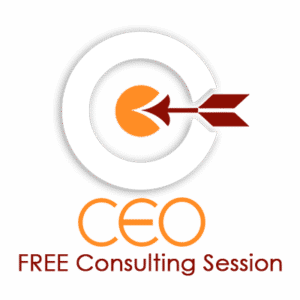
Summary: The demand for quick solutions and instant gratification is more prevalent than ever. While the promise of simple answers and rapid results may seem appealing, a closer look reveals a lack of lasting impact in many coaching approaches. Here’s why they often fail to create sustainable, transformative change.
Dear Dr. Sylvia,
Over the years, we have hired several coaches for our leaders and emerging leaders.
Mainly, they have shown short-term change, and then, within the blink of an eye, the old behaviors are back.
However, I don’t want coaches hanging around for years and years, either.
I know you are known for a unique approach that allows clients to do their “Sankofa Map.”
How long would that take, and how do you know the results won’t disappear like so many other coaching programs?
Signed,
Life Learner
Dear Life Learner,
Before we go to the benefits of doing a Sankofa Map at work, let me review why I think so many coaching efforts fall short of long-term success.
Shallow problem-solving doesn’t solve for very long.
Many coaching programs focus on addressing surface-level issues without delving into the root causes of challenges. This approach often results in temporary relief rather than long-term solutions. Effective coaching should involve a deep understanding of the individual’s unique circumstances, motivations, and underlying beliefs to create lasting change.
Ignoring complexity is a trap.
Life is inherently complex, and genuine personal and professional development requires a nuanced understanding of individual situations. Quick-fix coaching tends to oversimplify problems, neglecting the intricate factors contributing to challenges. A more comprehensive and holistic approach is necessary for sustained growth.
Lack of personalization leads to a neutral result.
One-size-fits-all solutions rarely yield lasting results. Quick-fix coaching often relies on generic advice and cookie-cutter strategies that may not resonate with an individual’s needs and personality. Customized coaching, tailored to each client’s unique circumstances, is essential for creating lasting impact.
Neglecting the journey takes you down dead-end roads.
Life and executive coaching should be viewed as a transformative journey rather than a destination. Quick-fix approaches may provide immediate solutions but often neglect the ongoing support and guidance needed for continuous growth. A more sustainable coaching model involves a commitment to long-term development and recognizing the evolving nature of personal and professional challenges.
Failure to foster self-awareness leads to more failure.
Lasting change requires a deep understanding of oneself, including strengths, weaknesses, and blind spots. Quick-fix coaching may offer temporary solutions without fostering the self-awareness necessary for individuals to navigate challenges independently. A robust coaching process should empower clients to develop the skills and self-knowledge needed for ongoing success.
While the allure of simple answers and quick results in executive and life coaching is undeniable, a critical examination reveals the limitations of such approaches. Sustainable transformation requires a commitment to addressing the complexity of individual experiences, personalizing coaching strategies, and fostering self-awareness.
As individuals seeking growth and development, choosing coaching relationships prioritizing long-term impact over fleeting fixes is essential. In doing so, we can unlock the full potential of personal and professional growth, navigating life’s challenges with resilience and authenticity.
Now, let me discuss how CEO Â Pattern Breakthrough Coaching is, as you said, unique.
Often, what is not working in relationships has a long tail. Much time is spent getting individuals to “play nicely” with their colleagues, direct reports, and those they report to.
Relationship conflict is often like playing Whack-a-Mole
Yet, there is often a cycle of pattern repetition.
For example, you get some coaching; you are given a few techniques when talking to Tom, who drives you bonkers. Soon, you feel better reacting to Tom. All is good until… your new direct report shows the same procrastinating tendencies, annoys the heck out of you, and yup, back to Whack-a-Mole.
Pattern awareness is a vital part of emotional intelligence
To help overcome destructive behavior patterns, we have developed the OUT Technique, which solves present-moment issues and allows individuals to see their larger life patterns, those invisible threads from the past.
There are three distinct parts, and it usually takes three to six months for new ways of relating to take hold and have staying power.
OBSERVE your behavior to discern underlying patterns
 UNDERSTAND and probe deeper to discover the origins of these patterns
 TRANSFORM your behavior by taking action to change.
The UNDERSTAND part of our coaching includes the opportunity to do your Sankofa Map, a term from Ghana that means “clear the past to free the present.”
Change lasts when you see the past, present, and future more holistically. Hundreds who have used the OUT Technique have indicated that positive results remain after five years. This is based on research done by East Stroudsburg University.
We believe that lasting results cannot be found with superficial methods. We also think that lasting change does not have to take years. Our coaching and programs have stood the test of time.
To your success,
Sylvia Lafar
For more information, contact us at www.ceoptions.com.


